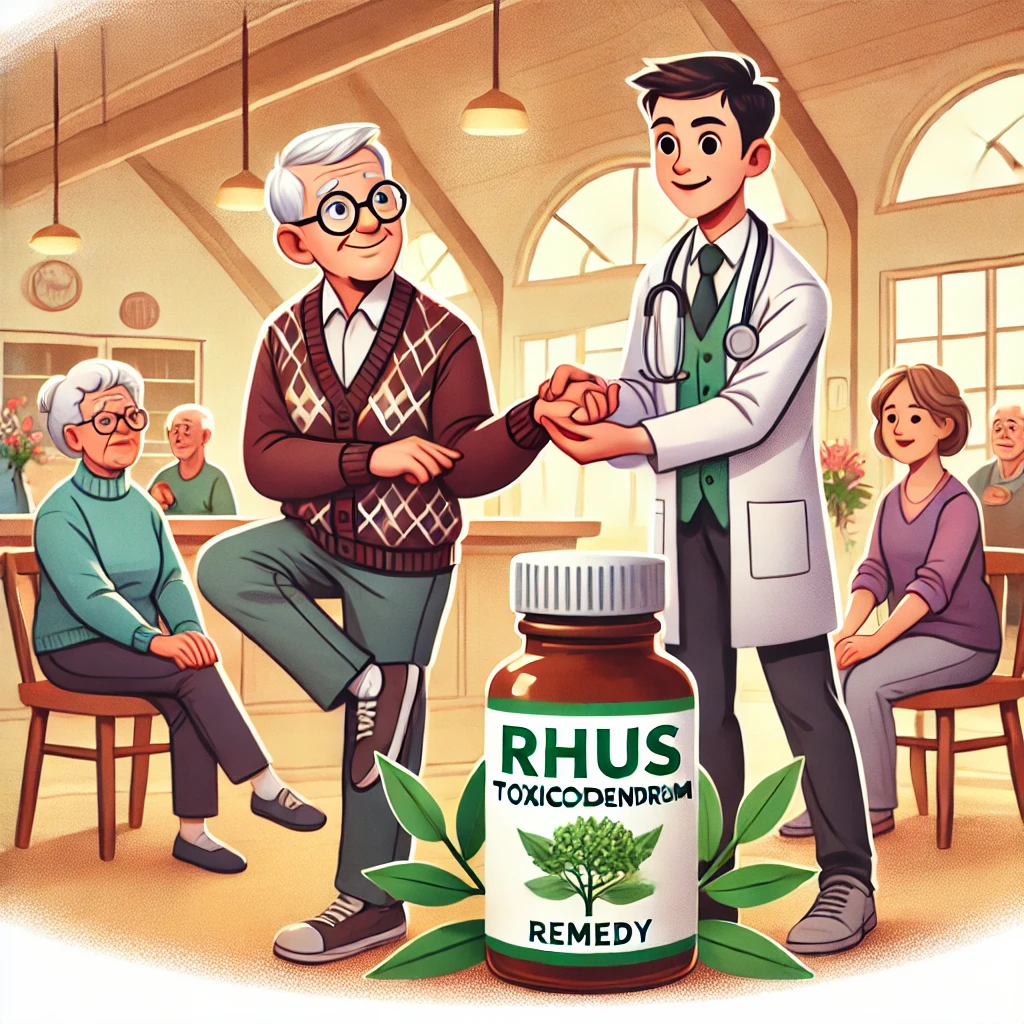Rhus Toxicodendron – Remedy for Stiffness, Restlessness, and Skin Complaints

What is Rhus Toxicodendron?
Rhus Toxicodendron, derived from the Poison Ivy plant, is a
powerful homeopathic remedy often used for musculoskeletal issues, skin eruptions,
and complaints aggravated by rest or inactivity. It is particularly effective
for stiffness and pain that improve with motion and worsen with rest, cold, or
dampness. Rhus Tox also addresses various skin conditions, including itching,
redness, and eruptions.
When is Rhus Toxicodendron Used?
1. Musculoskeletal Complaints
- Stiffness and
pain in joints, muscles, or tendons, especially after overexertion.
- Aggravation
from rest or inactivity, with relief upon continued motion or warm
applications.
- Symptoms worse
in cold, damp weather or after exposure to wet conditions.
- Commonly used
for rheumatic pain, sprains, and injuries.
2. Skin Conditions
- Itching,
redness, and blister-like eruptions, often resembling poison ivy rash.
- Burning or
stinging sensations, especially aggravated by scratching.
- Eruptions may
ooze and crust over, with relief from hot applications.
3. Restlessness and Agitation
- Difficulty
remaining still due to discomfort, with constant need to change position.
- Restlessness
during illness, with aching and stiffness that demand motion.
4. Fever and Flu-like Symptoms
- Chills
alternating with heat, accompanied by body aches and a restless
disposition.
- Symptoms worse
at night and during damp, cold weather.
5. Injuries and Strains
- Pain and
stiffness after sprains, strains, or overexertion of muscles and joints.
- Swelling and
discomfort that improve with heat or gentle motion.
Key Symptoms
- Stiffness and
Pain: Worse at rest, after overexertion, or in cold, damp weather.
Improves with motion and warmth.
- Skin Eruptions: Itchy, red, or
blistered skin, often oozing and crusting. Aggravated by cold or
scratching.
- Restlessness: Constant need
to move due to discomfort.
- Fever: Flu-like
symptoms with alternating chills and heat, worse at night.
- Injury
Recovery: Effective for sprains, strains, and overexertion injuries.
Personal Profile
- Physical
Appearance: Stiff and restless, with visible discomfort during rest or
inactivity.
- Temperament: Irritable and
restless, with a tendency to overexert and push through physical
limitations.
- General
Sensitivity: Susceptible to cold, damp weather and worsened by rest or
immobility.
Differences from Other Remedies
1. Rhus Tox vs. Bryonia
- Rhus Tox: Pain improves
with motion and worsens with rest. Restlessness is key.
- Bryonia: Pain worsens
with motion and improves with rest. The individual is irritable and
prefers immobility.
2. Rhus Tox vs. Arsenicum Album
- Rhus Tox: Restlessness
is due to stiffness and discomfort, with a preference for warm
applications.
- Arsenicum
Album: Restlessness stems from anxiety and fear, with a preference for
warmth but often with burning sensations.
3. Rhus Tox vs. Apis Mellifica
- Rhus Tox: Skin eruptions
are itchy, red, and often oozing, with relief from warmth.
- Apis Mellifica: Skin
complaints are swollen, pink, and burning, with relief from cold
applications.
Quick Reference for Acute Uses
- Joint and
Muscle Pain: Stiffness and discomfort worse at rest, cold, or damp, relieved by
motion.
- Skin
Conditions: Itchy, red eruptions resembling poison ivy rash, often oozing or
crusting.
- Flu-like
Symptoms: Restless body aches with alternating chills and heat.
- Injury Recovery: Strains,
sprains, or overexertion with stiffness and swelling.
- Restlessness: Inability to
remain still due to discomfort, needing to move for relief.